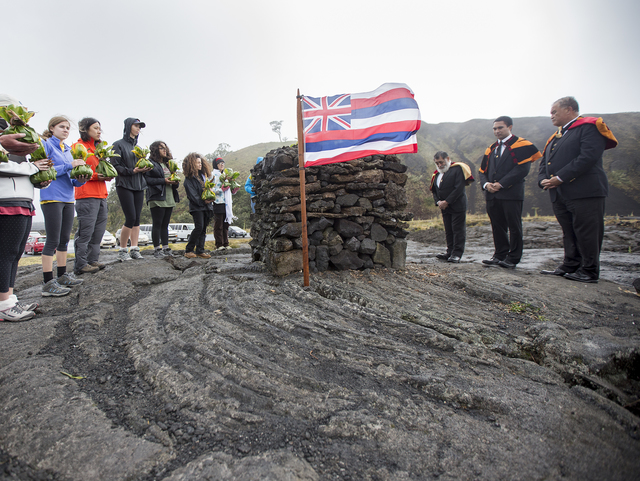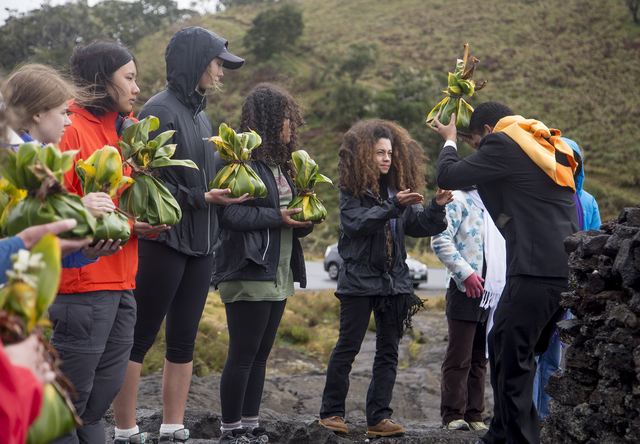MAUNA KEA — Growing up, Paul Neves heard stories — vivid, sometimes devastating accounts from his mother, who described what she knew of his ancestors’ experiences in isolation at the Kalaupapa leprosy colony. ADVERTISING MAUNA KEA — Growing up, Paul
MAUNA KEA — Growing up, Paul Neves heard stories — vivid, sometimes devastating accounts from his mother, who described what she knew of his ancestors’ experiences in isolation at the Kalaupapa leprosy colony.
Neves’ great-grandparents both were sent to the peninsula colony on Molokai and later died. His grandfather was born there in 1892 and left as a child.
“When my mother would ask (my grandfather), ‘What happened to your mother and father?’ She’d be told, ‘Oh, they were washed out to sea,’” Neves recalls. “It was a way of saying, they were as good as dead. But they didn’t die until way after he left — but what do you tell a child? My parents faces fell off? No, it’s, ‘They went to sleep.’”
So for Neves, along with the dozen or so community members who ceremoniously gathered at the traditional Ahu o Kupuna near the Mauna Kea Access Road on Wednesday amid chilly afternoon weather, the occasion was intensely important. Wednesday marked the 150th anniversary of when the first 12 leprosy-afflicted people were sent to Molokai.
Neves, joined by a handful of members of the Royal Order of Kamehameha, led a public ceremony aimed at remembering those original 12. The event included a song from Molokai and placing 12 ho‘okupu — gifts with special meaning for the day — on the ahu for each person, Neves said. It was also capped at 12 minutes, one minute for each person.
“It’s good to commemorate how devastating it was at that time,” said Neves’ son Kinohi, 23, who helped lead the ceremony. “It seems like learning about your history kind of defines who you are. It’s good to commemorate about my own family and my past family, I think it’s important.”
Those first 12 patients were sent to Molokai following enactment of a leprosy isolation law in 1865. About 8,000 people with leprosy, also known as Hansen’s disease, were sent to the colony between 1866 and 1969. Most died.
In 1969, the law was lifted, but some residents chose to stay by choice. Today, about 15 people remain, and Kalaupapa is now part of a national historical park.
Neves never met his grandparents or his grandfather. But in 1975, a 20-something Neves and his mother visited Kalaupapa for the first time and stayed among the residents.
“I think what was most profound, was when my mother told me, ‘Don’t stare at them, smile at them,’” Neves said. “She told me, ‘Touch them as much as you can.’ … Leprosy takes away all the extremities, your fingers, your toes, the bone part of your nose, the jaws — there’s no muscle. It’s horrible. And yet these people were so beautiful.”
Wednesday’s ceremony was coordinated on behalf of Ka ‘Ohana O Kalaupapa, a nonprofit comprised of Kalaupapa residents, family, descendants and friends. The organization aims to help descendants learn about their ancestors, preserve history and advocate for the existing community. It has held several events around the islands in remembrance of the 150th anniversary.
The organization is currently working to create a memorial at the colony in honor of the thousands who died, Neves said. And it will help the last remaining residents see their wishes fulfilled — to be buried at the colony.
“What struck me was the resilience of these people faced with such a thing, I mean, that’s why we’re here,” Neves said. “They had to build their own community of broken people, and even found love in it amongst each other.”
Email Kirsten Johnson at kjohnson@hawaiitribune-herald.com.




